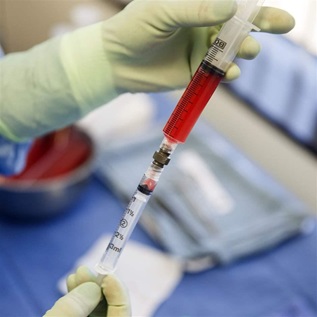Report Finds That School Kitchens Need Significant Upgrades
Investments in equipment and infrastructure can help schools serve healthier meals
WASHINGTON —Only 1 in 10 school districts nationwide (12 percent) has all the kitchen equipment needed to serve healthy foods, according to a new report issued by the Kids' Safe and Healthful Foods Project. The report makes recommendations for how schools, policymakers, industry, and philanthropic partners can work together to make these investments and provide healthy, appealing foods more efficiently. It is the first national assessment of districts' kitchen equipment and infrastructure needs.
“Serving Healthy School Meals: U.S. schools need updated kitchen equipment,” finds that schools would be better able to serve meals that meet nutrition requirements if investments were made in new equipment. Most often, school districts reported needing equipment to receive and store fruits and vegetables, ranging from shelving to walk-in refrigerators and freezers.
In addition to conducting a survey, the project in July 2013 convened stakeholders from 31 states to discuss how schools could find the resources to update their kitchens and cafeterias to meet or exceed the updated nutrition standards. The group developed strategic approaches for financing equipment and infrastructure upgrades, including partnerships, sponsorship funding, and low-interest loans. The model approaches, many of which have been demonstrated by schools across the country, are detailed in “Serving Healthy School Meals: Financing strategies for school food service,” the summary of proceedings from the workshop which the project released today.
“Having the right tools could help schools more efficiently serve students nutritious, appealing meals that they will enjoy,” said Jessica Donze Black, director of the Kids' Safe and Healthful Foods Project. “We identified strategies that can help schools across the country get the equipment and infrastructure needed to serve healthy foods.”
Additional findings from the report indicate that:
- Of the school districts that reported having inadequate equipment, more than 85 percent are “making do” with a less-efficient process or workaround.
- Only 42 percent of school food service directors reported having budgets to purchase equipment, and fewer than half of them expected the funds to be adequate.
- To serve healthy foods, schools needed equipment with a median per-district cost of $131,000. There was a wide range in the cost of different pieces; the five most-needed items are priced from $32 (for serving utensils) to $1,941 (for large-capacity food processors).
- More than half of all school districts (55 percent) need kitchen infrastructure changes, such as electrical upgrades, at one or more schools.
In response to the report's findings and a series of specific suggestions discussed in the workshop proceedings, the project makes the following recommendations:
- School officials and local policymakers should work collaboratively with parents, teachers, students, and funders to identify and implement strategies for meeting equipment, infrastructure, and training needs.
- Federal, state, and local governments should place a priority on making funds available to help schools upgrade their kitchen equipment and infrastructure to efficiently serve healthy and appealing meals.
- Nonprofit and for-profit organizations that have an interest in improving children's health, education, school infrastructure, and community wellness should assist schools in acquiring the necessary equipment.
The new report is the second in a series released by the project examining school districts' ability to provide meals that meet updated national nutrition standards. To produce this series, the project commissioned Mathematica Policy Research, a nonpartisan research firm, to assess the challenges related to kitchen equipment, training, and infrastructure in a national survey of 3,372 school food service directors or their designees. The first report in this series, released in September 2013, found that school districts with inadequate equipment are making do with less-efficient processes, such as having daily—and more costly—deliveries of fresh produce instead of being able to store it on-site. Even with these challenges, 80 percent of school districts are meeting nutrition standards for lunches, according to the U.S. Department of Agriculture. However, the current temporary strategies may not be sustainable.
The federal government has taken steps to improve school kitchens. Today, USDA announced the distribution of funds that Congress appropriated for school food service equipment. Separately, the bipartisan School Food Modernization Act of 2013 would establish a loan and grant assistance program within USDA to help pay for school kitchen and dining area upgrades, new equipment, and training and technical assistance for school food service personnel.
“The grants made available today by USDA are a great example of how to address schools' needs,” said Donze Black. “It will require buy-in from schools, communities, and the government to make sure that they have the right tools to serve nutritious meals efficiently and effectively, but it is a goal worth achieving.”
###
The Kids' Safe and Healthful Foods Project provides nonpartisan analysis and evidence-based recommendations on policies that impact the safety and healthfulness of school foods. The project is a collaboration between The Pew Charitable Trusts and the Robert Wood Johnson Foundation.











